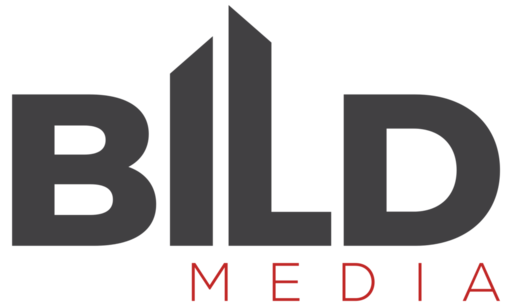“Good is the enemy of great. And that is one of the key reasons why we have so little that becomes great. We don’t have great schools, principally because we have good schools. We don’t have great government, principally because we have good government. Few people attain great lives, in large part because it is just so easy to settle for a good life.”
-Jim Collins
By all accounts, our industry is doing good. Shipments are growing at a consistent rate, there are new retailers, manufacturers, community operators, and service companies coming into the space, and I’m not aware of very many businesses in the industry that are going out of business, though I’m sure there are a few. The industry is growing, and that is good.
But how can we be great? What would it take to DOUBLE the size of the manufactured housing industry? There are approximately 100K new manufactured homes shipped per year. Can we take that to 200K, or 300k, or more?
I say yes.
The good news is that we’ve been there before. If we did it before, we can do it again. In 1996, the peak of the post HUD code shipments, there were 374,000 manufactured homes shipped that year. That is over 3 times what we’re seeing now. Imagine what our industry would look like now if we had 3 times the retailers, 3 times the lenders, 3 times the manufacturers, etc.
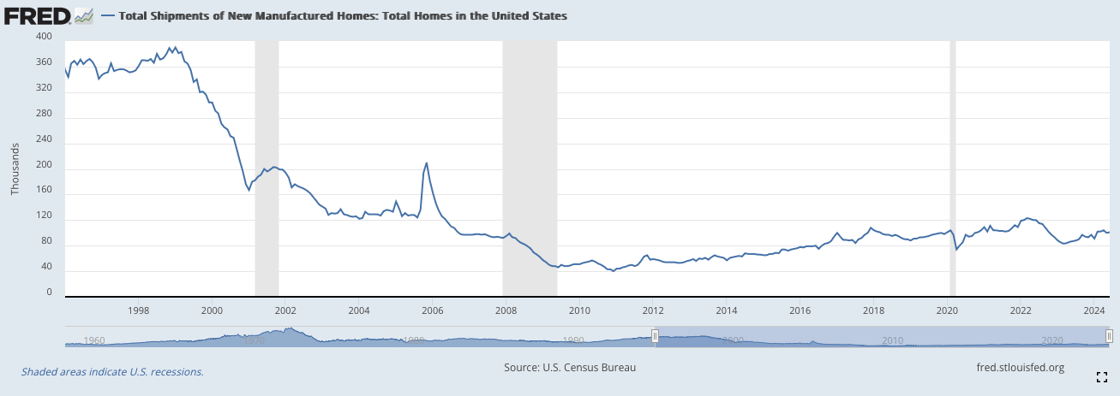
“But David, the lending was different…”
It certainly was. There was, without a doubt, easier lending practices in the late 90s in our industry. Some of it may have been a little too easy. Nevertheless, the demand was there and more people wanted to purchase manufactured homes. There has not been an exodus of potential manufactured home buyers from this country, which means we can return to those numbers. In fact, there has never been a better opportunity to sell affordable housing than there is now.
Take a look at the chart below. This chart shows the median income in the US (blue) vs. the median income (red) required to purchase an affordable home. Housing affordability is becoming increasingly out of reach for the average American home buyer.
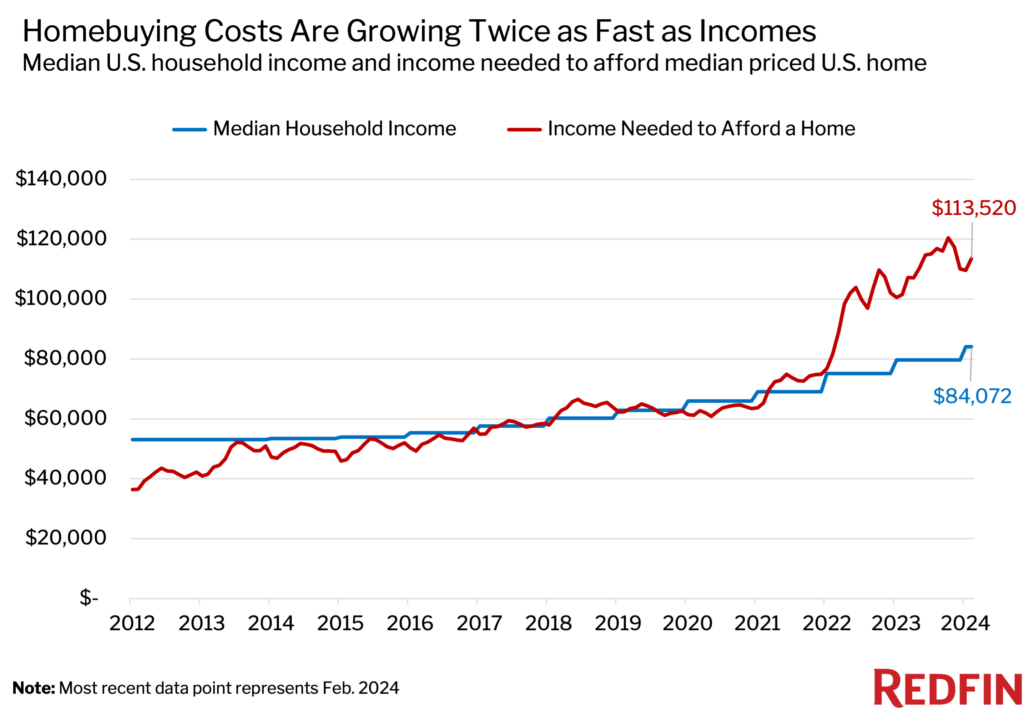
The affordability problem isn’t just bad, it’s historically bad. According to Goldman Sachs and data from the Atlanta Federal Reserve, housing affordability is the worst that it’s ever been. This should cause our industry to grow. When housing affordability is bad, the market for affordable housing is good. And if housing affordability is the worst it’s ever been, the market for manufactured housing has never been better.
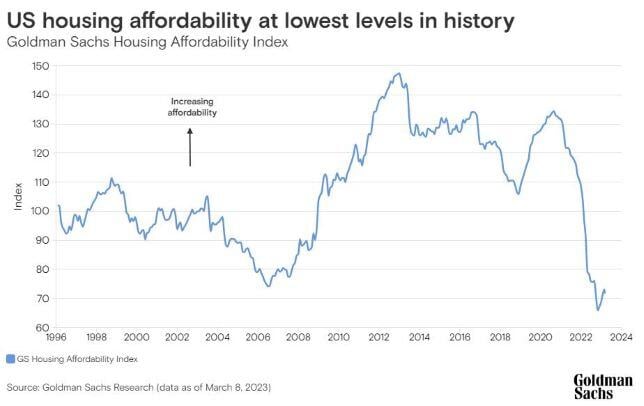
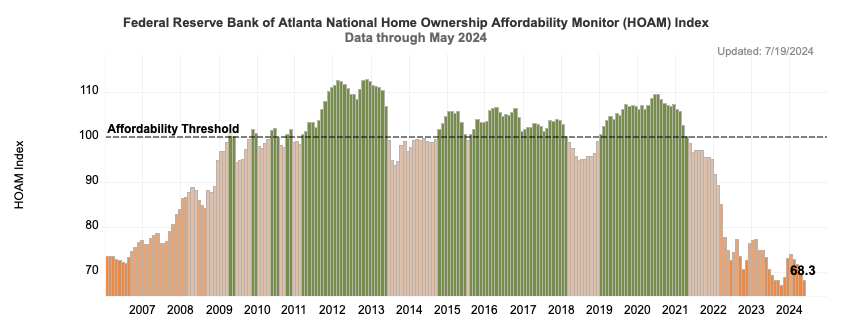
So what’s the deal? If the need has never been higher for affordable housing, why isn’t the manufactured housing industry growing at a record pace?
When I ask this question at industry events, the first two answers I always get are zoning and financing. And it’s true – there is a lot of prohibitive zoning nationwide for manufactured housing, and manufactured housing does not have the financing options available that site built housing does (though it is getting better). But those are contrived, removable barriers – they are not permanent. A few lines of legalese and a couple signatures could make those go away, and create an environment very friendly to manufactured housing. It’s easier said than done, of course, but it is nevertheless, a solvable problem.
Our legislative barriers are a challenge, but they could be worse. We could have permanent barriers to business. For example, say you want to build a golf course at the North Pole. That has real, physical barriers. There’s tons of ice, no water source, grass can’t grow, the birds will eat the golf balls, and the polar bears will eat the players. Those are some legit, probably unsolvable, barriers. Fortunately for everyone reading this, we don’t have to figure out how to play 18 holes with Santa Clause. ; )
Let’s look at one component of the solution to the zoning and financing barriers, awareness. Our industry has an elegant solution to a nationwide housing affordability problem. A solution of which 80%+ of future home buyers are unaware. This awareness problem becomes poignantly clear when we look at data from Google. The number of people searching online to learn more about manufactured housing is declining. Housing affordability is continuing to worsen, but fewer and fewer people are interested in the #1 solution to the affordable housing crisis. This is a problem.
The chart below is from Google Trends, a service that quantifies all of Google’s traffic and search data in regards to a specific topic. In this case, we’re looking at our industry, manufactured housing. (Note: mobile home is the term they use, as searches for ‘mobile home’ vastly outnumber manufactured home – but that is a topic for another day…)
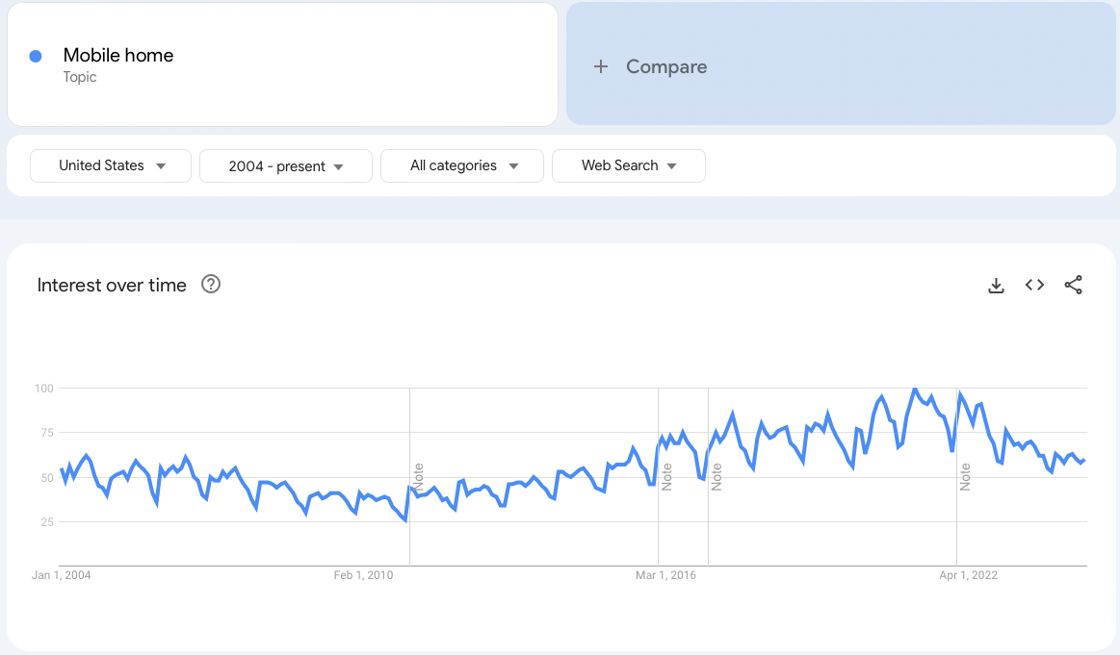
The downward trend in the past 3 years is not good.
To really get a feel for the lack of manufactured housing awareness, let’s put a couple of different topics on there with us. In the chart below, I went with RVs and solar energy. MH, RVs, and solar are all expensive consumer items, except MH serves a basic need for shelter, and at this point in time, RVs and solar energy are not necessary for survival.
And they’ve both got us beat.
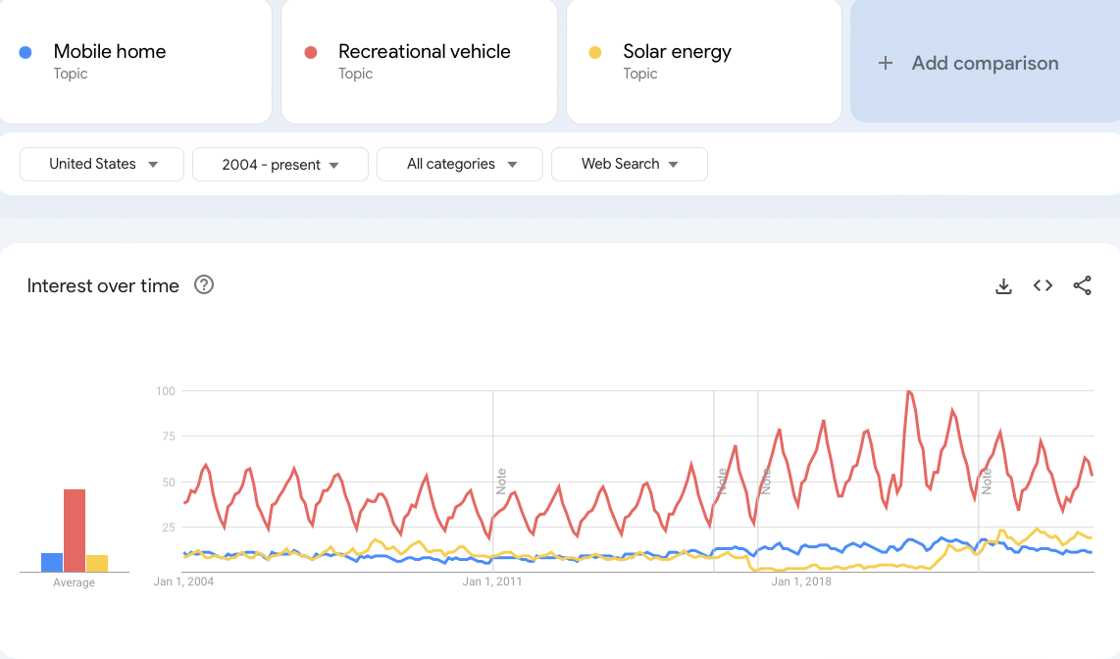
Need more proof? Try this: Go out on main street in your town and ask several people what they think of manufactured housing. I do this a lot when I travel for events, and I typically get the same responses: lots of blank stares, a few people that try to guess, and a couple people that actually know anything about manufactured housing.
If we want to grow, both as businesses and as an industry, we have to fix the awareness problem.
Yes, there are legislative hurdles to overcome, and we need politicians on our side. But ask yourself this: what is a politicians number one objective? Getting re-elected. And who re-elects politicians? The people. And the people, for the most part, are unaware of manufactured housing. This is the problem that we need to solve. We need to make the people aware of, and subsequently demand more, access to affordable housing in the form of manufactured housing. When there is more demand from the people, the politicians will listen more closely, and things will change. If I could wave a magic wand and make 75% of American want to buy a manufactured home, do you think there would be in legislative barriers in the way? Or would they all suddenly disappear?
Is demand low because of barriers in zoning and financing, or are the barriers in zoning and financing still in place because of low demand?
